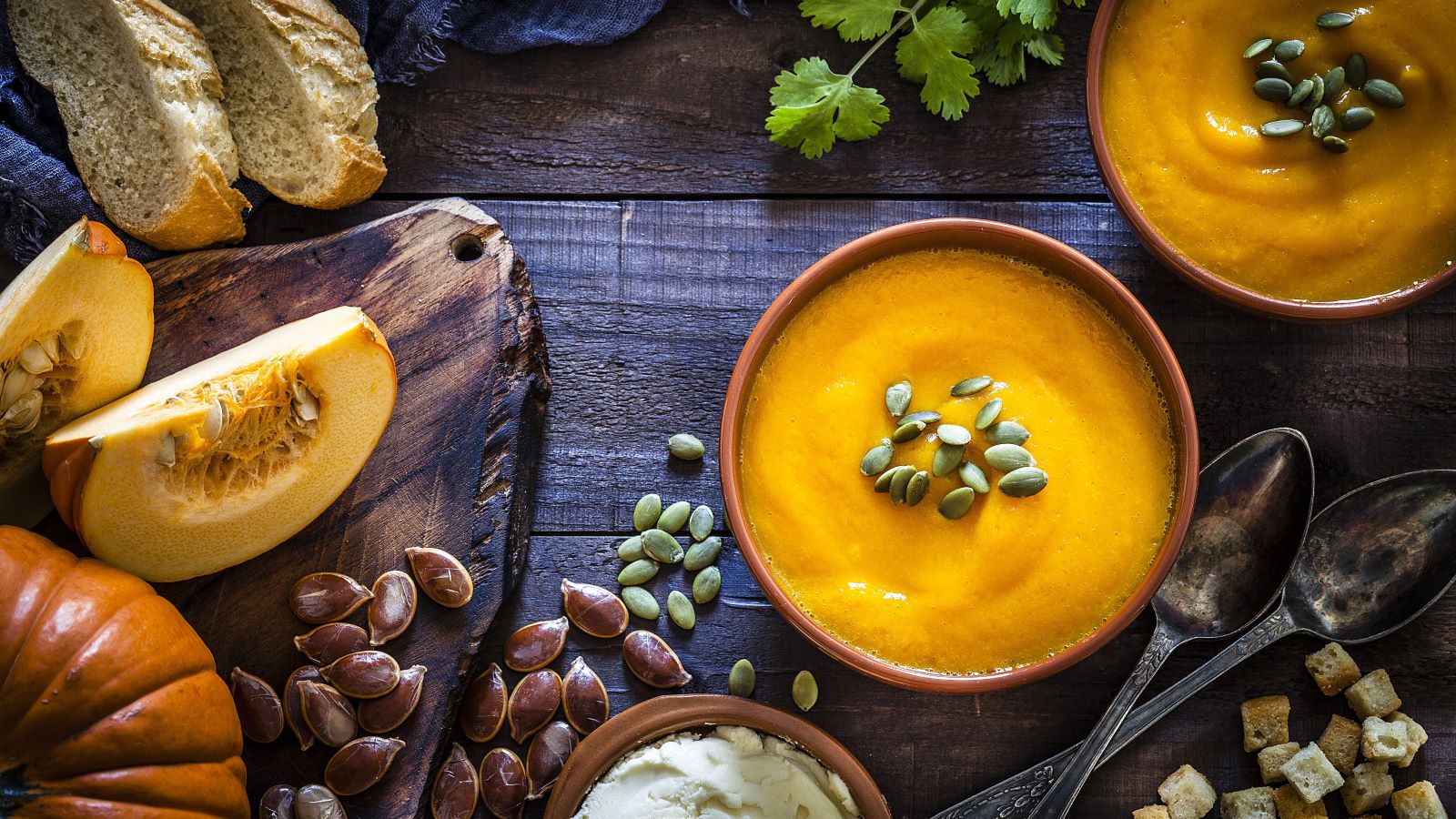What’s round, occasionally carved, and makes for a colorful addition to any fall meal?
If you answered pumpkin, you’re correct. The fruit – it falls into this category because we eat its soft flesh and it grows as the fruit of a vine – provides many health benefits, according to Jamie Allers, RD, a registered dietitian with Hartford HealthCare.
“I’ve been cooking with pumpkin a lot lately because there are so many ways to prepare it,” Allers says.
Not sold? Here are some benefits, and creative ideas for how to use it in your cooking.
5 health benefits of pumpkin
1. High in fiber
Pumpkin’s high fiber content plays a key role in supporting healthy digestion. Not only does it help regulate bowel movements, but it also leaves you feeling fuller, for longer.
2. Rich in antioxidants
Beta-carotene — the antioxidant that gives pumpkin its vibrant orange color — helps to protect cells from damage. This reduces the risk of a number of chronic diseases and supports healthy aging.
> Related: 5 Reasons to Eat More Apples
3. Full of Vitamin A and C
Pumpkin is full of different vitamins and minerals, but in particular, vitamins A and C.
These nutrients help to support healthy skin, eye health, immune function and heart health. They also help bolster your body’s immune system, which is extra helpful during cold and flu season.
4. Low glycemic index
If you’re watching your blood sugar, pumpkin is for you. Thanks to its low glycemic index, it shouldn’t spike your blood sugar levels, when its consumed pure and unsweetened.
“On its own, it’s low in calories and fat, too,” she adds.
5. Hydration benefits
Staying hydrated when it gets colder can be challenging, but this versatile fruit may save the day.
Since it’s about 94% water, pumpkin keeps you hydrated, which helps support digestion, absorption of nutrients and maintains energy levels throughout the day.
> Related: 5 Healthy Summer Fruits
Pumpkin isn’t just for pies.
It’s best known as a pie filler, but it isn’t just for dessert, Allers stresses.
Not sure where to start? Try these ideas:
- Swap it for butternut squash. “Roast it on its own, with other vegetables or puree it in a soup,” she suggests.
- Add it to your breakfast routine. Try stirring pumpkin into yogurt or oatmeal with a pinch of pumpkin pie spice for some tasty, seasonal flavor.
- Make muffins or bread. You can also use pumpkin as a healthy substitute for other ingredients when cooking. It will add needed moisture in place of oil or butter in home-baked items, Allers says.
Fresh is best, but canned works too.
While you can peel and chop fresh pumpkin, most people will turn to the canned variety when cooking and baking. If you’re doing that, it’s important know what you’re buying, Allers notes.
“Canned pumpkin can be sweetened with added sugar or flavorings to make pie filling, for example. That adds calories to it. But, you can get plain cooked or pureed pumpkin with nothing else added,” she explains. “Check the ingredient list on the can to see if it has added sugar or flavoring.”
When it comes to pumpkin-flavored items, she adds that many use a mix of cinnamon, nutmeg and other spices but don’t actually contain the fruit. This is also true of the pumpkin spice syrup coffee shops use for flavoring.



